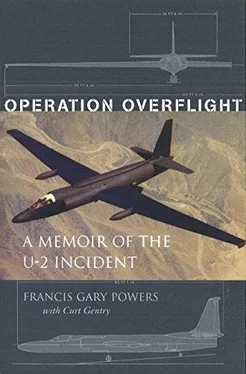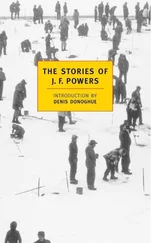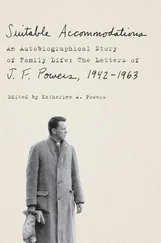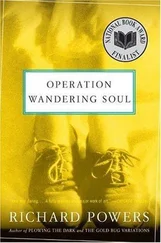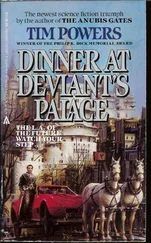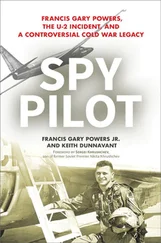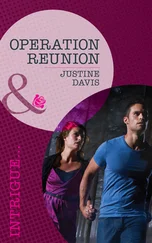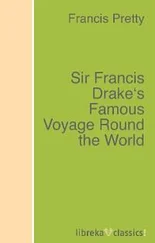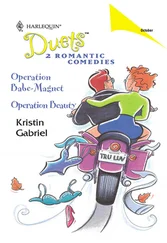The plan, however, had one basic flaw: it presumed that I was dead. Alive, with no prior knowledge of the cover story, anything I said would in all likelihood contradict their version.
With Khrushchev’s announcement on May 7 that the pilot was “alive and kicking,” it should have been obvious the plan would have to be scrapped. Yet at six P.M. on the seventh, some dozen hours afterword reached the United States of Khrushchev’s speech, the State Department released the cover story, approved by the President, that although a U-2 had probably made an intelligencegathering flight over the Soviet Union, no authorization for such a flight had been given by authorities in Washington.
The first three paragraphs of James Reston’s lead story on the front page of The New York Times , May 8, 1960, give the details:
WASHINGTON, May 7—The United States admitted tonight that one of the country’s planes equipped for intelligence purposes had “probably” flown over Soviet territory.
An official statement stressed, however, that “there was no authorization for any such flight” from authorities in Washington.
As to who might have authorized the flight, officials refused to comment. If this particular flight of the U-2 was not authorized here, it could only be assumed that someone in the chain of command in the Middle East or Europe had given the order.
Eventually, of course, the plan was abandoned, with President Eisenhower’s unprecedented admission that he had personally authorized the overflights, but not before several alternate plans had been considered, including Central Intelligence Agency Director Allen Dulles’ offer to resign and assume the blame.
I heard the story from several people in the agency. One was Newman himself, who laughed as he recounted how he had hidden in that basement for several days.
Newman had a wife and three children. Although presumably there would have been some financial compensation—perhaps his retirement with a better pension than otherwise—they would have had to live the rest of their lives under the stigma that he had recklessly precipitated an action which wrecked the Summit Conference and conceivably could have launched a nuclear war.
It was not an easy laugh.
Nor did I laugh in return. For, in a sense, the plan called for two scapegoats, as the flight could not have taken place without my concurrence.
On hearing the story, I was glad, for the sake of everyone concerned, that the plan had been abandoned.
What I didn’t realize, until much later, was that this was only half-true.
According to the newspapers, retired Federal Appeals Court Judge E. Barrett Prettyman had been chosen to conduct the board of inquiry. The hearing would be held “in-house,” closed to the press and public, in CIA headquarters in Washington.
A few days earlier, I was taken to 2430 E Street to meet Allen Dulles. By this time Dulles had been replaced as Director of Central Intelligence (DCI) by Kennedy appointee John A. McCone. He was still in the process of moving out of his office, however.
It was an odd meeting. Dulles greeted me with a bemused look. We shook hands. He commented wryly that he had heard quite a bit about me. I told him how pleased I was to be back in the United States. He replied that he had read the debriefing reports: “We are proud of what you have done.”
Later, wondering why the meeting had taken place, I guessed it was simply because Dulles wanted to meet the spy who had given him so many headaches.
I had a problem, which became clearly obvious just as I was to appear before the board of inquiry. With few exceptions, most agency personnel I had come into contact with since my return home were people I had never met previously. Most of them—such as the security men who kept me in “protective custody” at the “safe” houses—had no connection with the U-2 program. This meant that they were not cleared for such information, and I couldn’t discuss the more sensitive aspects of the operation with them.
I knew nothing about Prettyman himself. It had been reiterated, a number of times, that the hearing was merely a formality, in order to give something to the press, that, insofar as the agency itself was concerned, I had already been completely “cleared.” Obviously it would help my case, put me in a far more favorable light, if I could reveal exactly what I had withheld from the Russians. Yet some of it, such as that portion pertaining to the “special” missions, no hint of which had ever appeared publicly, was still political dynamite. Any leak, even at this late date, could have tremendous international repercussions.
“How much should I tell Prettyman?” I asked one of the agency representatives. His suggestion: “Use your own discretion.” It was not exactly a carte-blanche reply.
Obviously the “special” missions were not to be mentioned: those missions that began on September 27, 1956, in Turkey, when Colonel Perry instructed me to fly over the Mediterranean, watch for and photograph any concentration of two or more ships.
The assignment, the first of many such “special” missions, gave me an increased respect for the effectiveness of American intelligence. In July, 1956, Egypt had seized the Suez Canal. In late September, a full month before the first shot was fired in the Sinai, the United States was aware not only that Israel intended to invade Egypt but also that preparations were being made for France and Great Britain to come to her aid.
The ships U.S. intelligence was looking for were British, French, and Israeli.
I flew the mission, going as far as the island of Malta, and returning, caught sight of several ships and photographed them. From the air I could not identify the registry; however, later, when the photographs had been developed and studied, I was told the mission had been successful. Although I was in a very real sense spying on the vessels of three friendly nations, I felt no compunctions about my action. In our atomic age, any war, no matter how isolated, how small, how seemingly insignificant, could blossom into a nuclear holocaust. It seemed to me then—and still does—far more important that we know exactly what was going on and do nothing about it, as in this case, than plunge in and try to do something, with no real idea of what was happening, as had been the case on more than a few other occasions.
After that the “special” missions became frequent occurrences. Because I had done so well in navigation during my training at Watertown, Colonel Perry assigned me many of these flights. A great number of them during this period were over Israel and Egypt. On such missions I would usually first overfly Cyprus, at that time still under British rule, with cameras on, primarily to see if a fleet was being assembled there, then on to Egypt and Israel. One does not realize, until seeing it from the air, just how small Israel is. A few passes, a few miles apart, and it could be photographed in its entirety. By comparison, Egypt is a mammoth presence.
On these missions several places merited special attention. The Suez Canal, of course, was one. Another was the Gulf of ’Aqaba, then as now a source of contention. Here, in close proximity, Israel, Jordan, Saudi Arabia, and Egypt all had ports, Israel’s port being its only link with the Red Sea. Another was the Sinai Peninsula. There are few more desolate places than the Sinai. Against it, the deserts of the American Southwest look like oases. For miles and miles there is absolutely nothing but bleakness.
Yet, on a flight on October 30, 1956,1 looked down and spotted something. Black puffs of smoke—what must have been the first shots fired in the first daytime battle of the Sinai campaign.
With the outbreak of the war, flights were stepped up, photo interpreters on the alert at Adana to process and study films the moment a plane returned. It would be safe to say that American intelligence probably possessed a clearer overview of the entire war than many of the battlefront commanders. Within hours we could verify or disprove the intelligence reports of the combatants.
Читать дальше
